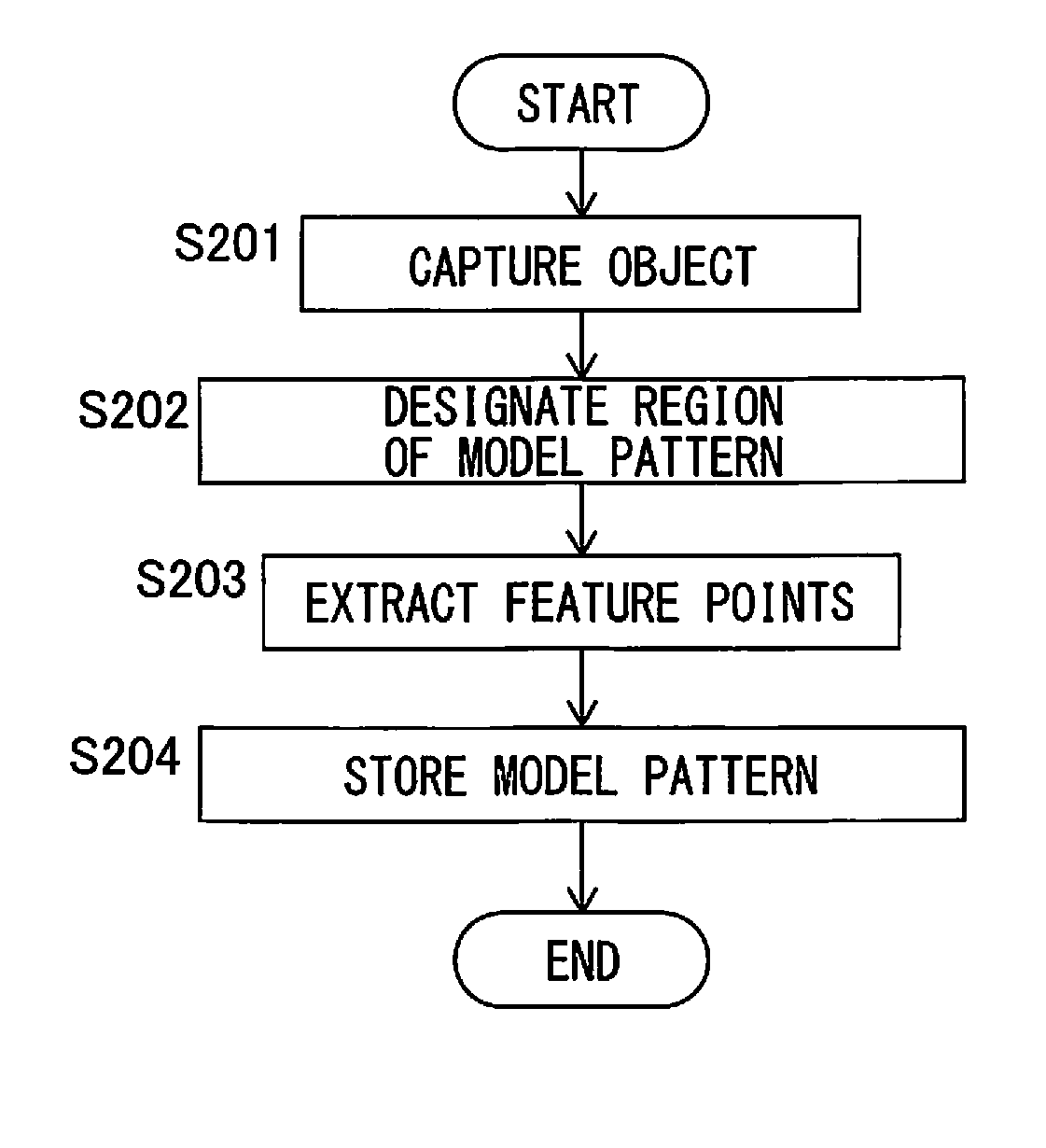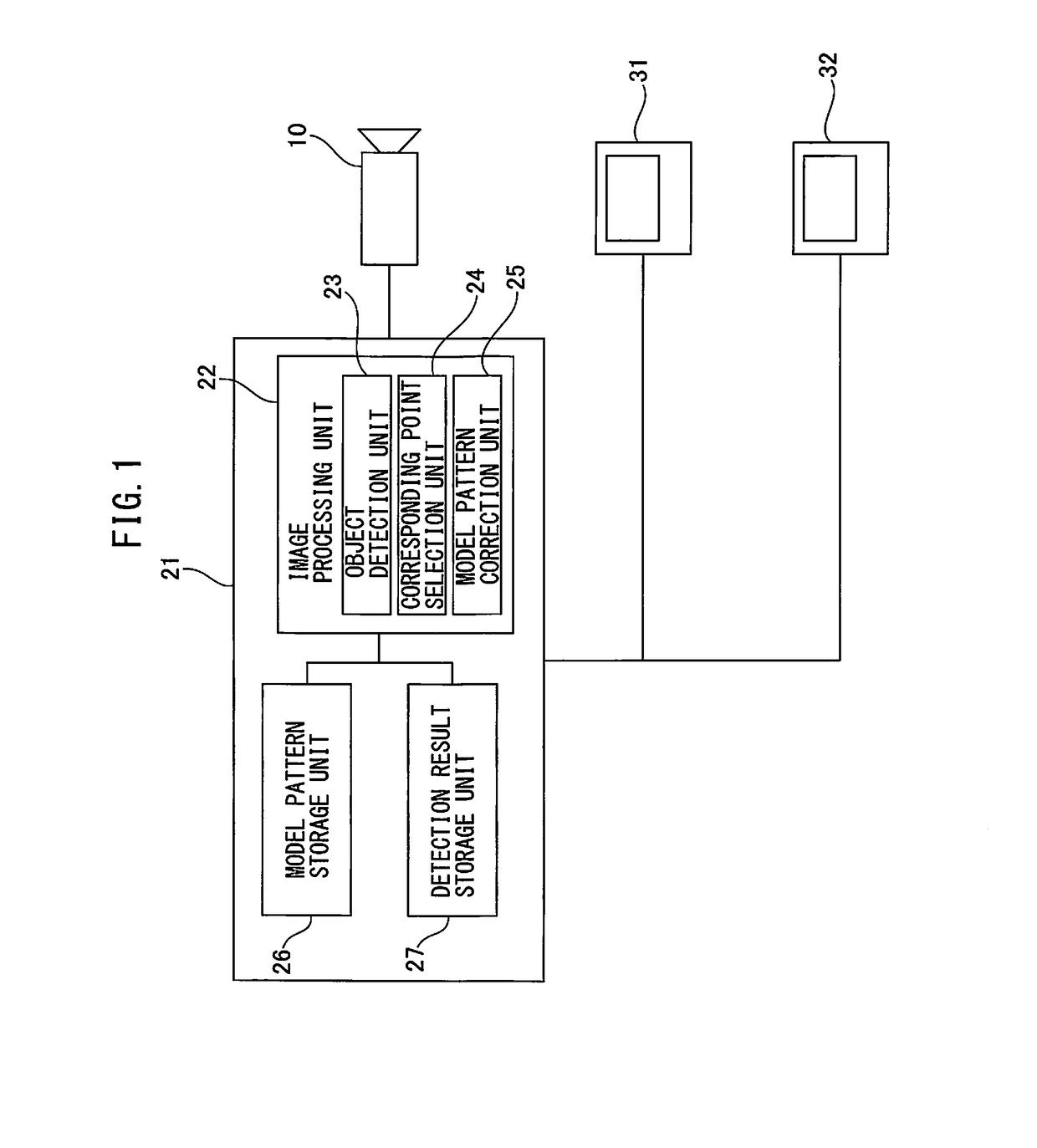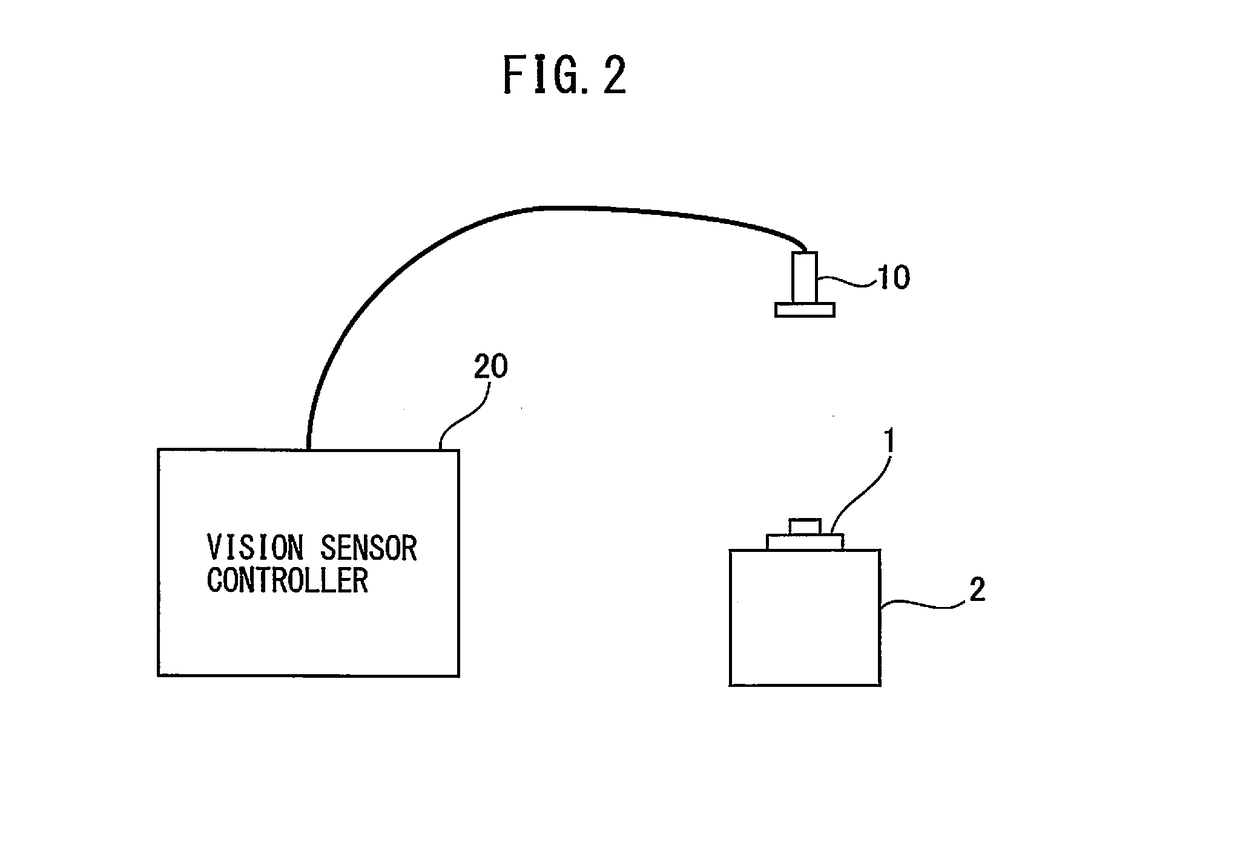Image processing device and method for detecting image of object to be detected from input data
a technology of image processing and input data, which is applied in the field of image processing device and method for detecting image of object to be detected from input data, can solve the problems of unsatisfactory matching, undetectable detection, and undetectable removal of model features, and achieve the effect of precise detection of objects
- Summary
- Abstract
- Description
- Claims
- Application Information
AI Technical Summary
Benefits of technology
Problems solved by technology
Method used
Image
Examples
first embodiment
[0064]FIG. 4 is a flowchart illustrating processing in the image processing device 21 according to a
[0065]The details of processing performed by the image processing unit 22 in the first embodiment will be described below with reference to FIG. 4.
[0066]In step S101, the image processing unit 22 generates a model pattern and stores the generated model pattern in the model pattern storage unit 26.
[0067]The model pattern in this embodiment is formed by a plurality of feature points. Although various points are available as feature points, edge points are used as feature points in this embodiment. Edge points have high luminance gradients in a picture image and may be used to obtain the contour shape of the object 1. Since a method for extracting edge points is described in, e.g., “Computer Vision,” Kyoritsu Shuppan Co., Ltd., January 2007 and is well-known, a description thereof will not be given herein.
[0068]Examples of the physical quantities of an edge point include the position, lu...
second embodiment
[0175]In the second embodiment, even for second feature points which do not correspond to the first feature points of the model pattern, the statistics of the physical quantities of these corresponding points are obtained, and new first feature points are added to the model pattern on the basis of the obtained statistics.
[0176]FIG. 7 is a flowchart illustrating processing according to the second embodiment.
[0177]Steps S301 to S303 are the same as steps S101 to S103 in the first embodiment. With steps S301 to S303, NT_j images of the object have been detected from an input picture image I_j, as in the end of step S103. The detection position of a detected image T_jg (g=1 to NT_j) is defined as R_Tjg.
[0178]In step S304, a corresponding point selection unit 24 selects corresponding points corresponding to first feature points forming the model pattern. Although the process in step S304 is basically the same as that in step S104 of the first embodiment, they are different in that in the...
third embodiment
[0205]A third embodiment will be described next.
[0206]In the third embodiment, on the basis of the statistics of the physical quantities of corresponding points corresponding to a feature point forming a model pattern, determination indices are added to a first feature point forming the model pattern and used in an object detection unit 23 to improve the reliability of detection.
[0207]FIG. 10 is a flowchart illustrating processing according to the third embodiment.
[0208]Steps S401 to S404 are the same as steps S101 to S104 in the first embodiment. NO_i corresponding points determined to correspond to the i-th first feature point P_i forming the model pattern have been found, as in the end of step S104. The m-th corresponding point corresponding to the i-th first feature point P_i of the model pattern is defined as O_im (m=1 to NO_i).
[0209]In step S405, the statistics of the physical quantities of the NO_i corresponding points O_im corresponding to the first feature point P_i are cal...
PUM
 Login to View More
Login to View More Abstract
Description
Claims
Application Information
 Login to View More
Login to View More - R&D
- Intellectual Property
- Life Sciences
- Materials
- Tech Scout
- Unparalleled Data Quality
- Higher Quality Content
- 60% Fewer Hallucinations
Browse by: Latest US Patents, China's latest patents, Technical Efficacy Thesaurus, Application Domain, Technology Topic, Popular Technical Reports.
© 2025 PatSnap. All rights reserved.Legal|Privacy policy|Modern Slavery Act Transparency Statement|Sitemap|About US| Contact US: help@patsnap.com



